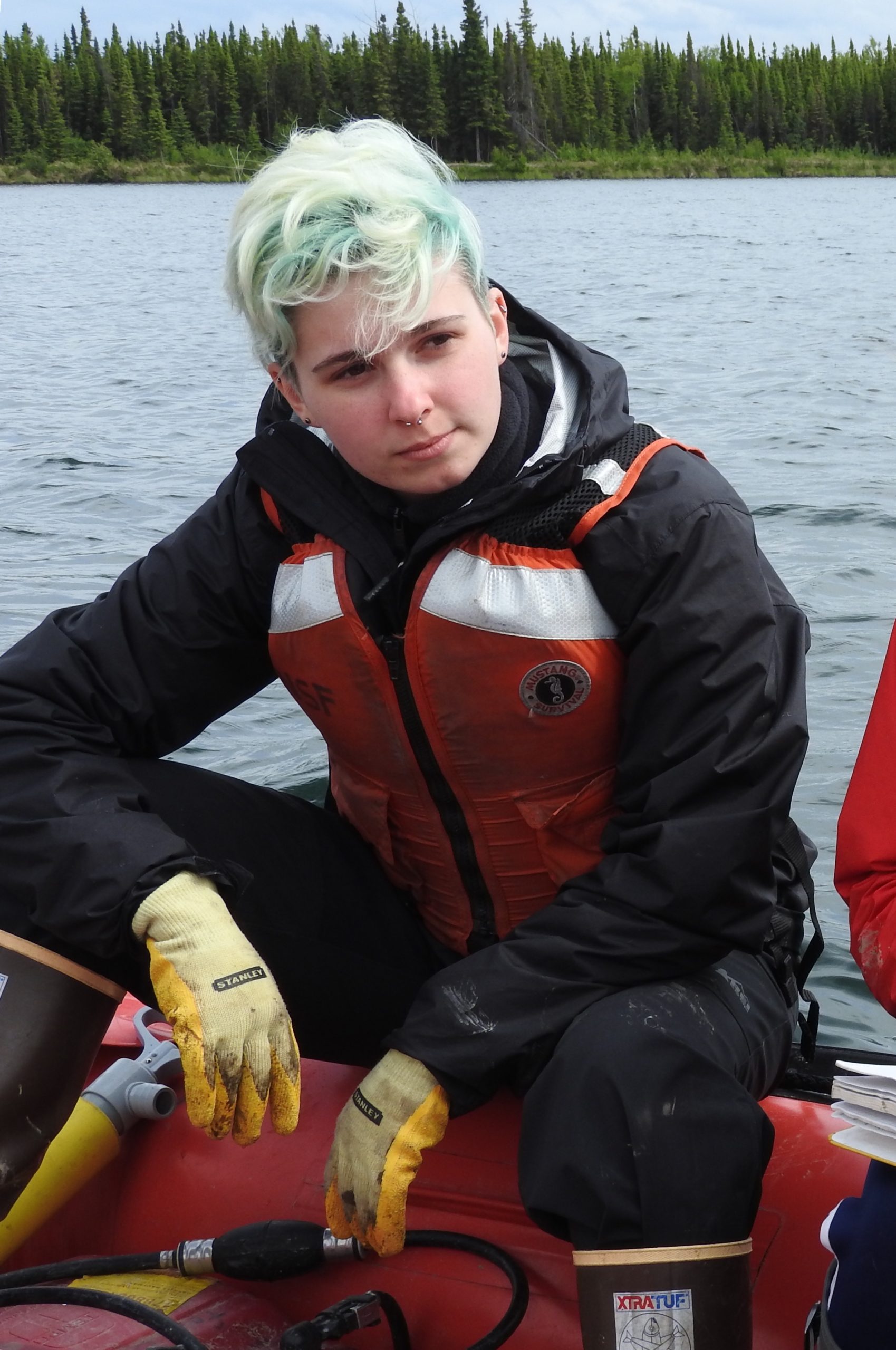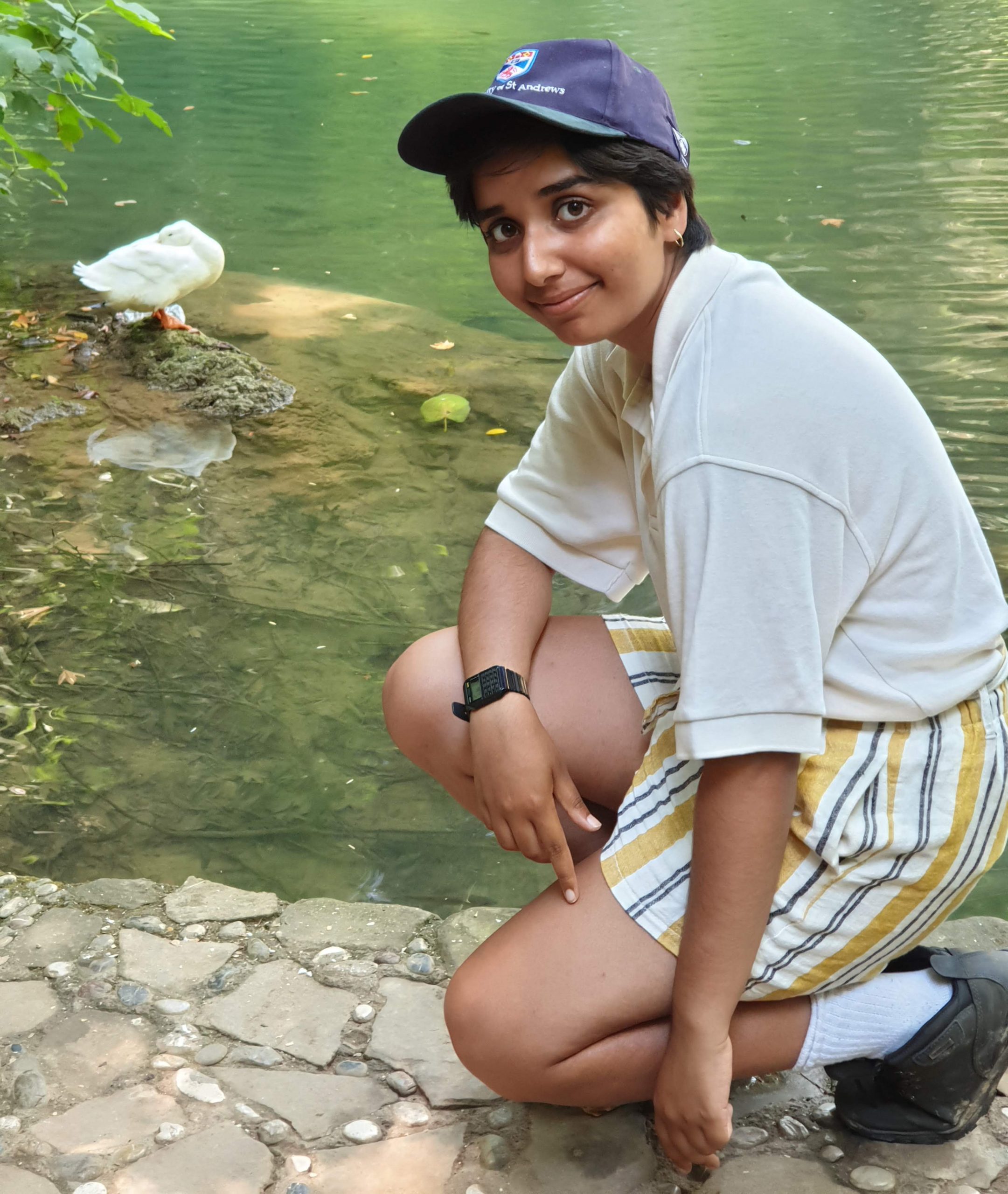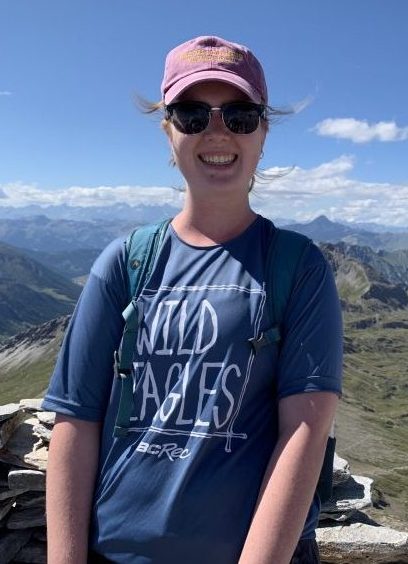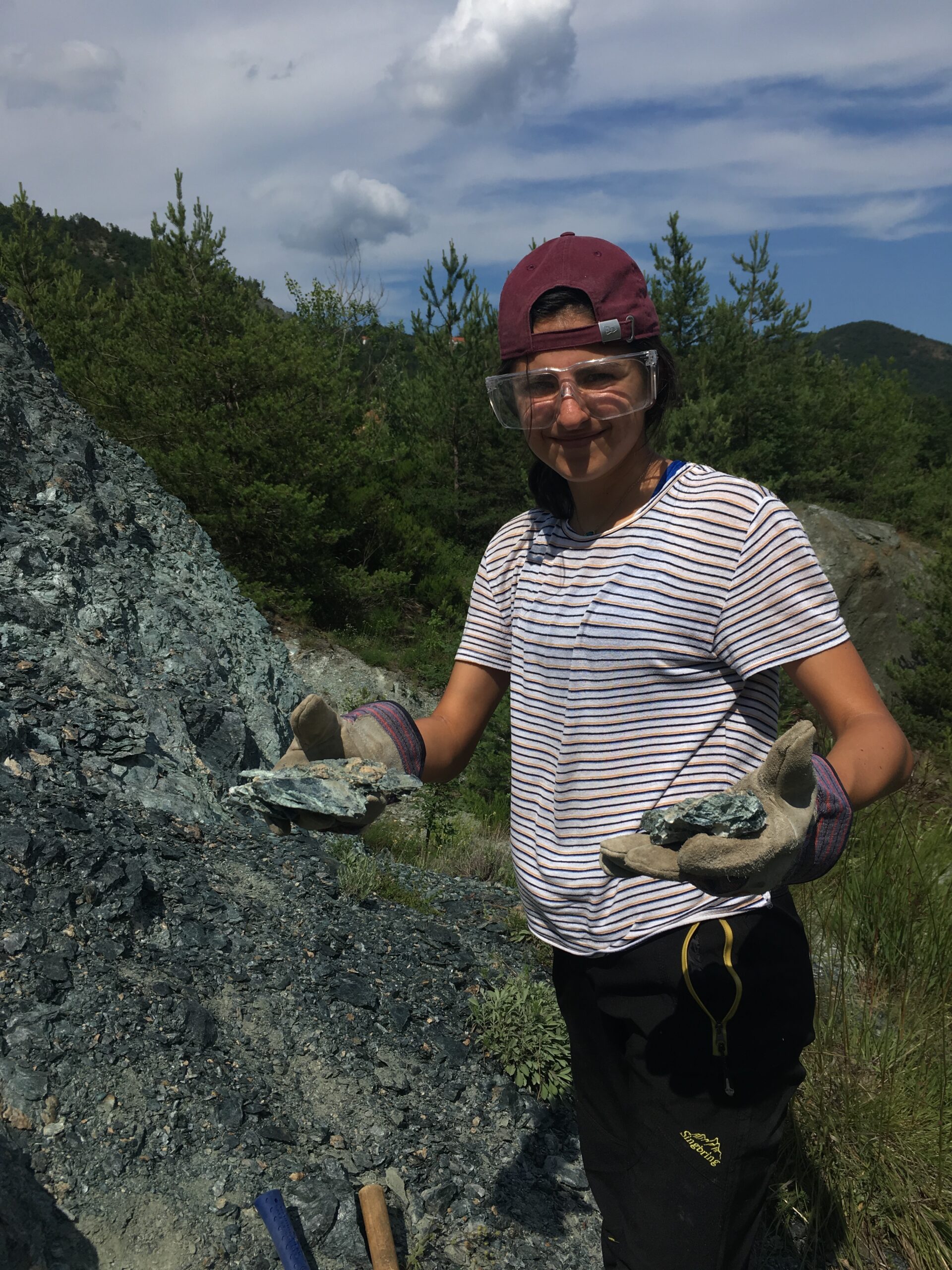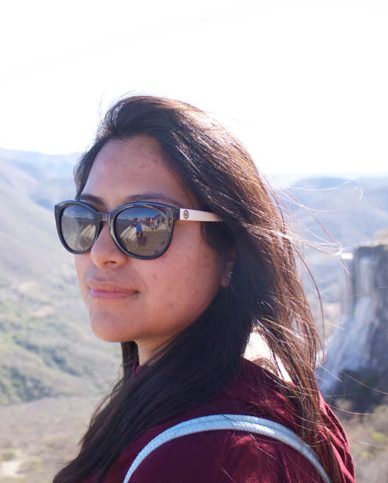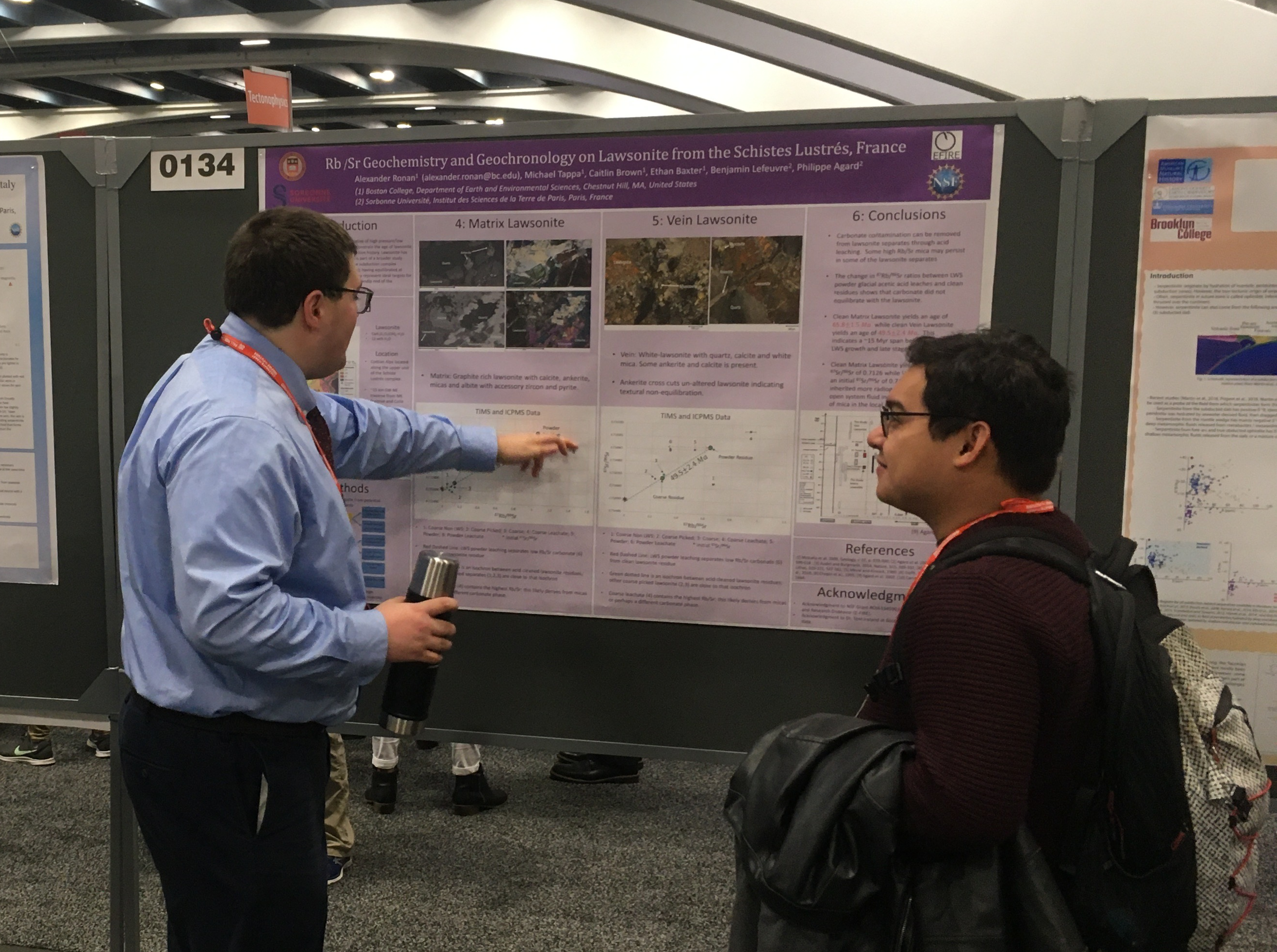icon-user Graduate Students
 Grace Beaudoin | University of Texas at Austin
Grace Beaudoin | University of Texas at Austin
gbeaudoin (at) utexas.edu
- B.A. Geology, University of California at Berkeley
Halogen behavior during prograde subduction zone devolatilization
Investigate the loss of halogens (F, Cl, Br, I) from altered oceanic crust (AOC) during subduction zone metamorphism and devolatilization to explore geochemical cycling and fluid and element transport. Bulk stable Cl isotope values and bulk and in situ halogen concentrations are measured in a number of exhumed terranes to constrain the prograde evolution of the halogen budget, identify mineralogical controls, and examine halogen mobility during vein formation and fluid-rock interaction at high pressure conditions.
 Kirkland Broadwell | Virginia Tech
Kirkland Broadwell | Virginia Tech
sbkirk7 (at) vt.edu
- B.S. Geology from William & Mary (2013)
My E-FIRE research is broadly focused on constraining the durations, conditions, and chemical signatures of subduction zone processes.
One of my current projects is focused on understanding the timescales of fluid flow and deformation deep in subduction zones (i.e. at eclogite facies). To do this, I’m analyzing fractured garnet crystals from the Monviso ophiolite, which record textural and chemical evidence for repeated brittle deformation events that may be linked to pulsed fluid flow, to place constraints on the duration and period between successive fluid flow/deformation “events.”
I am also working on constraining the locations, timing, and conditions of important metamorphic reactions and fluid-rock interactions that occur during subduction, with the Voltri massif as a case study. To accomplish this, I am using a variety of methods to constrain P-T-t paths for eclogites across the ophiolite.
 Emmanuel A. Codillo| MIT-WHOI Joint Program
Emmanuel A. Codillo| MIT-WHOI Joint Program
ecodillo (at) mit.edu
- B.Sc. in Geology, University of the Philippines, Diliman
My research focuses on mass transfer processes between mafic and ultramafic rocks in different geologic settings including the oceanic lithosphere and subduction zones. Specifically, I aim to (1) untangle the contributions of fluid infiltration and diffusive metasomatism on the formation of metasomatic rocks which are ubiquitous in oceanic settings (steatites, rodingites, blackwalls) and exhumed high-pressure mélange terranes (talc-chlorite schists) and (2) distinguish high-pressure metasomatic processes in subduction zones from inherited oceanic signatures prior to subduction. I integrate results from field-based observations, thin section petrography, major and trace element geochemistry, physical property measurements, phase petrology, and thermodynamic reaction path modeling to pursue my research questions.
icon-chevron-right Profile
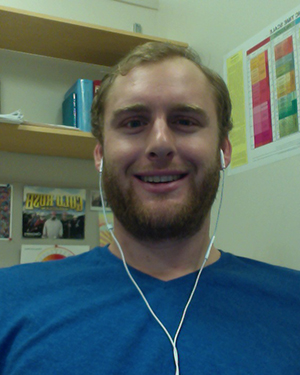
Gabe Epstein | Lehigh University
gse216 (at) lehigh.edu
- B.Sc. in Geology from the University of British Columbia. 2013
- Research Volunteer, USGS, GMEG, Flagstaff, AZ 2014-present
Use stable isotope systematics (C,O,N), microscopy, detailed field work, and other methods to determine fluid pathways within and near subduction zone interfaces. Assess the extent to which deformation, metamorphic grade, and bulk rock composition control fluid flow from the thin-section to the regional scale.
 Will Hoover | University of Maryland
Will Hoover | University of Maryland
whoover (at) umd.edu
- BA in Geology from Oberlin College
My focus as part of the EFIRE project will be on in situ analysis of Li, B, Ba and Li isotopes in mineral zones to constrain fluid timing and source. As part of this, I will be working to develop standards for correcting in situ Li isotope measurements. I am also interested in comparing Li isotope zoning to O isotope zoning to explore the effect of contrasting diffusion rates on the isotopic zoning record of fluid movement.
 Buchanan Kerswell | Boise State University
Buchanan Kerswell | Boise State University
buchanankerswell (at) u.boisestate.edu
- B.Sc. Utah Valley University (June 2015)
I am interested in the interplay between metamorphism and subduction zone dynamics. I use both rocks and thermomechanical models to constrain the thermal evolution of subduction zones and think about the implications to mineralogical changes and mechanical behavior along the subduction interface.
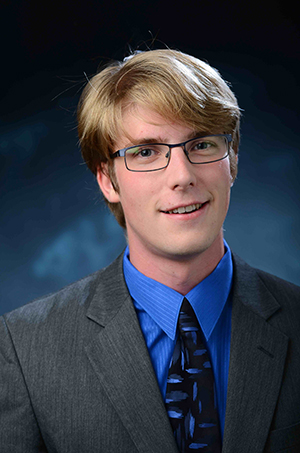 Ryan Stoner | University of California, Santa Barbara
Ryan Stoner | University of California, Santa Barbara
rstoner (at) umail.ucsb.edu
- B.A. University of Colorado Boulder
Alpine geochronology and petrology
icon-chevron-right Profile
icon-user Post-docs
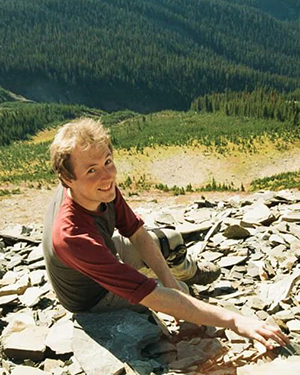 Paul Starr | Boston College
Paul Starr | Boston College
pgstarr (at) ucalgary.ca
- BSc: Oxford University (UK)
- MSci: Oxford University (UK)
- PhD: University of Calgary (Canada)
My project is centered around using Sm-Nd garnet geochronology to investigate subduction zone processes recorded by the high-pressure metamorphic complexes of the Western Alps. This will involve combining TIMS-based garnet geochronology with fieldwork, SEM and EPMA analysis, equilibrium thermodynamic modelling and other geochemical techniques such as trace element and isotope analysis.
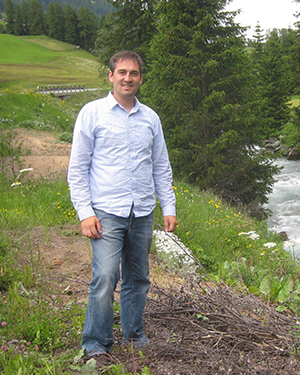 Besim Dragovic | Boise State University
Besim Dragovic | Boise State University
besimdragovic (at) boisestate.edu
- B.A. Earth Sciences, Boston University, 1999
- M.S. Geological Sciences, University of Connecticut, 2003
- Ph.D. Earth Sciences, Boston University, 2013
Stable isotopes studies on the nature and scale of fluid flow at the subduction interface
icon-chevron-right Profile
 Guillaume Bonnet | UC Santa Barbara
Guillaume Bonnet | UC Santa Barbara
gbonnet01 (at) gmail.com
- BSc: Sorbonne Université (France), 2013
- Diploma of Ecole Normale Supérieure de Paris (France), 2015
- MSc: Sorbonne Université (France), 2015
- PhD: Sorbonne Université (France)
Petrochronology of the internal Western Alps.
Joshua Garber | Penn State University
jxg1395 (at) psu.edu
- BS UT-Austin 2008 (Geology)
- MS UC-Davis 2012 (Geology)
- PhD UC Santa Barbara 2018 (Geology)
Zircon depth-profiling of W. Alpine gabbro/eclogite (Monviso, Corsica); quartz-in-garnet and zircon-in-garnet Raman thermobarometry of garnetiferous cherts (Schistes Lustres: Cottian Alps and Corsica); thermobarometry and trace-element mobility in subducted basalt (Corsica)
Tiffany Baumann, Lehigh University
Anna Gerrits, Boston College
Sky Goliber, Boston College
Christiana Hoff, University of Maryland
Kaylee Kraft, Lehigh University
Charlotte Lorthior, Boston College
Samuel Marshall, Lehigh University
Juan Felipe Bustos Moreno, Lehigh University
 Jaime Barnes | University of Texas at Austin
Jaime Barnes | University of Texas at Austin
Associate Professor
jdbarnes (at) jsg.utexas.edu
Research interests: My research interests encompass a broad spectrum of geochemistry, including stable isotope geochemistry, volatile cycling, metamorphism and volatile transport in subduction zones, serpentinization, and fluid-rock interactions and metasomatism in the high-T environment. Most of my research involves using stable isotopes as a geochemical tracer of fluids in various tectonic settings.
icon-chevron-right Profile
icon-chevron-right http://www.jsg.utexas.edu/light-isotope/
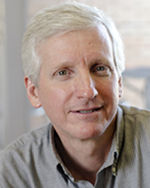 Gray E. Bebout | Lehigh University
Gray E. Bebout | Lehigh University
Professor
geb0 (at) lehigh.edu
Research interests: I consider the cycling of volatiles among the major Earth reservoirs (atmosphere, hydrosphere, biosphere, and lithosphere), with emphasis on understanding the metamorphic pathways affecting this flux. I explore the intriguing behavior of nitrogen and its utility in tracing modern and ancient biogeochemical cycling on Earth (and beyond).
icon-chevron-right Profile
 Maureen Feineman | The Pennsylvania State University
Maureen Feineman | The Pennsylvania State University
Assistant Professor & Associate Head of Undergraduate Programs
mdf12 (at) psu.edu
Research interests: I use igneous and metamorphic rocks to explore the history of plate tectonics and mantle processes on Earth. I am particularly interested in crust-mantle interactions as mediated by fluids and magmas.
icon-chevron-right Profile
icon-chevron-right http://www.personal.psu.edu/mdf12/Site/Maureen%20Feineman.html
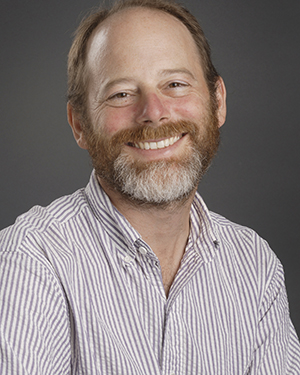
Matthew J. Kohn | Boise State University
University Distinguished Professor
mattkohn (at) boisestate.edu
Research interests: I study: (a) Metamorphic petrology and high-temperature geochemistry, aimed at using metamorphic records to understand convergent tectonic processes, and (b) Stable isotopes and low-temperature geochemistry, aimed at understanding records from fossil teeth of the processes of terrestrial paleoclimatic and paleoecological change.
icon-chevron-right Profile
 Sarah C. Penniston-Dorland | University of Maryland
Sarah C. Penniston-Dorland | University of Maryland
Associate Professor
sarahpd (at) umd.edu
Research interests: My research focuses on high-temperature petrology and geochemistry, with specific goals of understanding subduction-related fluids and the tectonic history of subduction-related metamorphic rocks. I collect field data and the analytical tools that I use include the electron microprobe, in situ trace element analysis of minerals, and stable and radiogenic isotope analysis of oxygen, carbon, lithium, osmium, and sulfur in rocks and minerals.
icon-chevron-right Profile
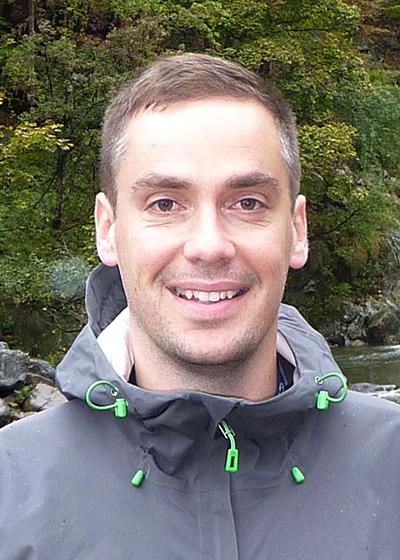 Andrew Smye | Pennsylvania State University
Andrew Smye | Pennsylvania State University
Assistant Professor
aus702 (at) psu.edu
Research interests: I am interested in the transport of heat and mass through continental lithosphere. To constrain the time and length scales of these movements, I combine field observations with radiogenic isotope geochronology, metamorphic petrology and numerical models.
icon-chevron-right Profile
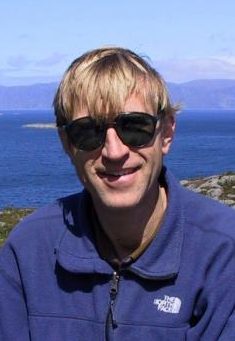 Brad Hacker
Brad Hacker
Professor
hacker (at) ucsb.edu
Research interests: Field, laboratory, and theoretical study of tectonics
icon-chevron-right Profile
Ethan Baxter | Boston College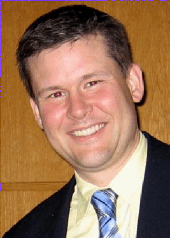
Professor
ethan.baxter (at) bc.edu
Research interests: I am interested in the timescales of broad tectonic processes including mineral growth, fluid production, heating, burial, and exhumation. Our lab specializes in the use of garnet geochronology integrated with other geochemical and petrologic data to constrain the dates, rates, and durations of these processes.
icon-chevron-right Profile
 Frieder Klein | WHOI
Frieder Klein | WHOI
Associate Scientist
fklein (at) whoi.edu
Research interests: My research focuses on fluid-rock interactions and their geochemical, biological, and geophysical implications. Current topics of interest include mass transfer, volume changes, and fracturing during hydrothermal alteration, abiotic organic synthesis and carbonate formation, phase petrology and kinetics of hydrothermal processes, habitability of subseafloor environments, soapstone formation and aseismic creep in major tectonic faults, and subduction of slow-spreading lithosphere.
icon-chevron-right Profile
 Mark Caddick | Virginia Tech
Mark Caddick | Virginia Tech
Associate Professor
caddick (at) vt.edu
Research interests: I study the metamorphic rock archive to determine the processes occurring at convergent plate boundaries. This involves work on deciphering (i) the pathways that rocks take during subduction or crustal thickening, (ii) the rates of change of pressure and temperature that they experience, (iii) the generation, evolution and consequences of fluids in the Earth, and (iv) mineralogical responses to these processes.
icon-chevron-right Profile
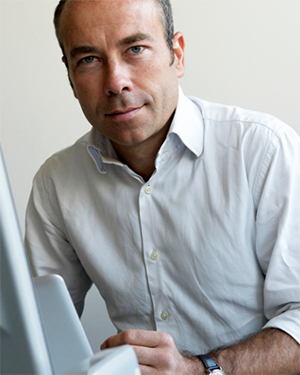 Philippe Agard | Sorbonne Université, Paris
Philippe Agard | Sorbonne Université, Paris
- Professor (Metamorphic petrology, Tectonics, Geodynamics)
- PI of the ZIP project
philippe.agard (at) upmc.fr
Research interests: My research focuses on subduction/obduction processes in several key localities (Alps, Iran, Oman, Turkey, Betics, Tianshan,…), on the exhumation of HP rocks and, more largely, on regional tectonics/geodynamics.
icon-chevron-right Profile
icon-chevron-right http://www.zip-itn.eu/
icon-chevron-right http://www.journals.elsevier.com/tectonophysics
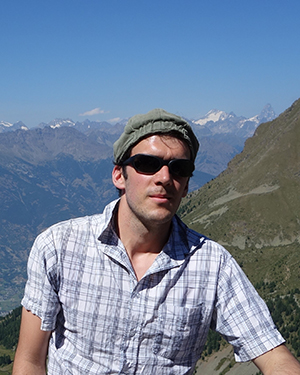 Samuel Angiboust | Institut de Physique du Globe de Paris, France
Samuel Angiboust | Institut de Physique du Globe de Paris, France
- Assistant professor
samuel.angiboust (at) gmail.com
Research interests: I am studying the field metamorphic record of subduction interface processes including fluid flow, deformation, seismicity and long term dynamics.
icon-chevron-right Profile
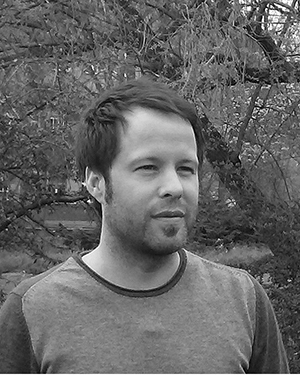 Timm John | Institut for Geological Science, Freie Universität Berlin
Timm John | Institut for Geological Science, Freie Universität Berlin
Professor of Mineralogy and Petrology
timm.john (at) fu-berlin.de
Research interests: Subduction zone processes with a special emphasize on the fluid flow in and through crystalline rocks and the chemical and mechanical consequences of fluid-rock interaction
icon-chevron-right Profile
César R. Ranero | ICREA at CSIC
Research Professor
cranero (at) icm.csic.es
Research interests: My research interest is focused on the study of the structure of the lithosphere to understand geological processes at subduction zones, rifted continental margins and oceanic spreading centers. I primarily work on the analysis, processing, and imaging of seismic data. I integrate seismic images and other geophysical observations with geological data to study the tectonic and magmatic processes that lead to the formation of oceanic lithosphere at spreading centers and the rift architecture of continental margins. I also study tectonic processes at convergent plate boundaries, where my interest has been centered on the relations between long-term tectonics and fluids in the incoming oceanic and overriding plates. I am particularly interested on the processes that govern the generation of earthquakes at subduction zones
icon-chevron-right Profile
icon-chevron-right http://www.barcelona-csi.cmima.csic.es
icon-chevron-right http://gma.icm.csic.es
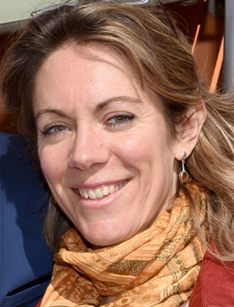 Anne Verlaguet | Sorbonne Université, Paris
Anne Verlaguet | Sorbonne Université, Paris
Maître de Conference
anne.verlaguet (at) sorbonne-universite.fr
Research interests: fluid-rock interactions during metamorphism; geochemical tracking of fluid release and scale of mass transfer, in particular in subduction zones; field work, combined geochemical tools (fluid inclusions, trace elements, stable isotopes, cathodoluminescence…), experimental petrology
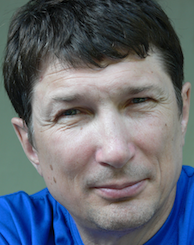 Taras Gerya | ETH-Zurich
Taras Gerya | ETH-Zurich
Professor
taras.gerya (at) erdw.ethz.ch
Research interests: Current research of Taras Gerya focuses on subduction and collision processes, ridge-transform oceanic spreading patterns, intrusion emplacement into the crust, generation of earthquakes, fluid and melt transport in the lithosphere, Precambrian geodynamics, formation of terrestrial planets and evolution of life.
 Carlos Garrido | Instituto Andaluz de Ciencias de la Tierra (IACT), CSIC & University of Granada
Carlos Garrido | Instituto Andaluz de Ciencias de la Tierra (IACT), CSIC & University of Granada
Research Scientist
carlos.garrido (at) csic.es
Research interests: I investigate the processes involved in the formation and differentiation of the Earth’s oceanic and continental lithospheres, their interaction with the hydrosphere, and the elemental cycles involved in the subduction of the hydrated lithosphere.
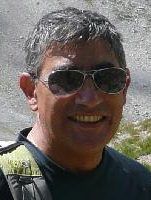 Marco Scambelluri | Universita degli Study di Genova
Marco Scambelluri | Universita degli Study di Genova
Professor
marco.scambelluri (at) dipterous.unige.it
Research interests: Research activity in metamorphic petrology, metamorphic fluids, fluid/rock interactions and petrology of eclogite-facies rocks. The work is field-based and process-oriented, and focusses on high- and ultrahigh-pressure oceanic and continental rocks from the Alps, Betic Cordillera (SE Spain), Dabie Shan -Sulu (China), the Caledonides of Western Norway. Main goals:
(1) subduction and exhumation of high- and ultrahigh-pressure rocks;
(2) fluids in subduction-zones, mass transfer and genesis of magmas at convergent plate margins;
(3) volatile and incompatible elements recycling from oceans and forearcs to the deep mantle. The focus is on the water and carbon transport in hydrates and carbonates and the crystallization of inclusions from complex fluid phases. Monitors are fluid-mobile elements like boron, chlorine, lithium and large-ion lithophile elements, that partition into the deep fluids and melts.
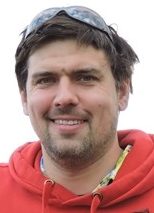 Horst Marschall | Goethe Universität Frankfurt, Institut für Geowissenschaften
Horst Marschall | Goethe Universität Frankfurt, Institut für Geowissenschaften
Wilhelm Heraeus Professor for Deep Earth Processes
marschall (at) em.uni-frankfurt.de
Research interests: Horst Marschall is interested in processes that operate at the slab-mantle interface in subduction zones, the transport of materials from the slab to the mantle wedge and the generation of magmas at convergent plate boundaries. He uses a combination of field work, petrology of high-pressure rocks and geochemical and stable-isotope investigations to unravel these processes.
 Jay Ague | Yale University
Jay Ague | Yale University
Henry Barnard Davis Memorial Professor of Geology & Geophysics
jay.ague (at) yale.edu
Research Interests: The metamorphic and igneous rocks that comprise the deep roots of mountain belts. Example research areas include heat and fluid transport through rocks, using minerals to determine rock formation conditions, and the roles of mountain building and subduction in global carbon and climate cycles.
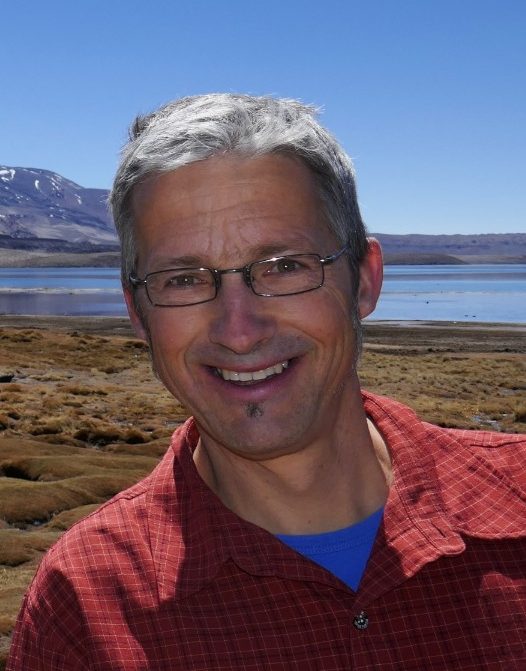 Othmar Müntener | Institut des Sciences de la Terre, Université de Lausanne
Othmar Müntener | Institut des Sciences de la Terre, Université de Lausanne
Professeur ordinaire
Othmar.Muntener (at) unil.ch
Research interests: I’m interested in field, analytical and experimental studies on the formation, exhumation and subduction of crustal and mantle rocks, with the goal to understand chemical and physical processes that affect the evolution of the Earth’s crust and mantle. I’m investigating specific processes such as crystallization of hydrous magmas at shallow and deep crustal levels, melt extraction zones in the middle and upper crust to understand the growth of terrestrial crust over time along constructive and destructive plate margins. Specifically I’m interested in petrological inheritance from constructive plate margins and its consequences on the diversity of collisional belts and subduction zones.
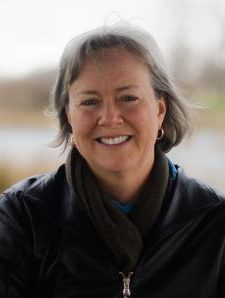 Roberta Rudnick | University of California Santa Barbara
Roberta Rudnick | University of California Santa Barbara
Professor
rudnick (at) geol.ucsb.edu
Research interests: Origin, composition, and evolution of Earth’s continents, including the continental crust and lithospheric mantle. Lithium isotope and chalcophile element geochemistry.
Also
Philippe Agard
Samuel Angiboust
Marco Scambelluri
Maureen Feineman
Matthew Kohn
Sarah Penniston-Dorland
As of May 2021, emails and external links are no longer updated.


